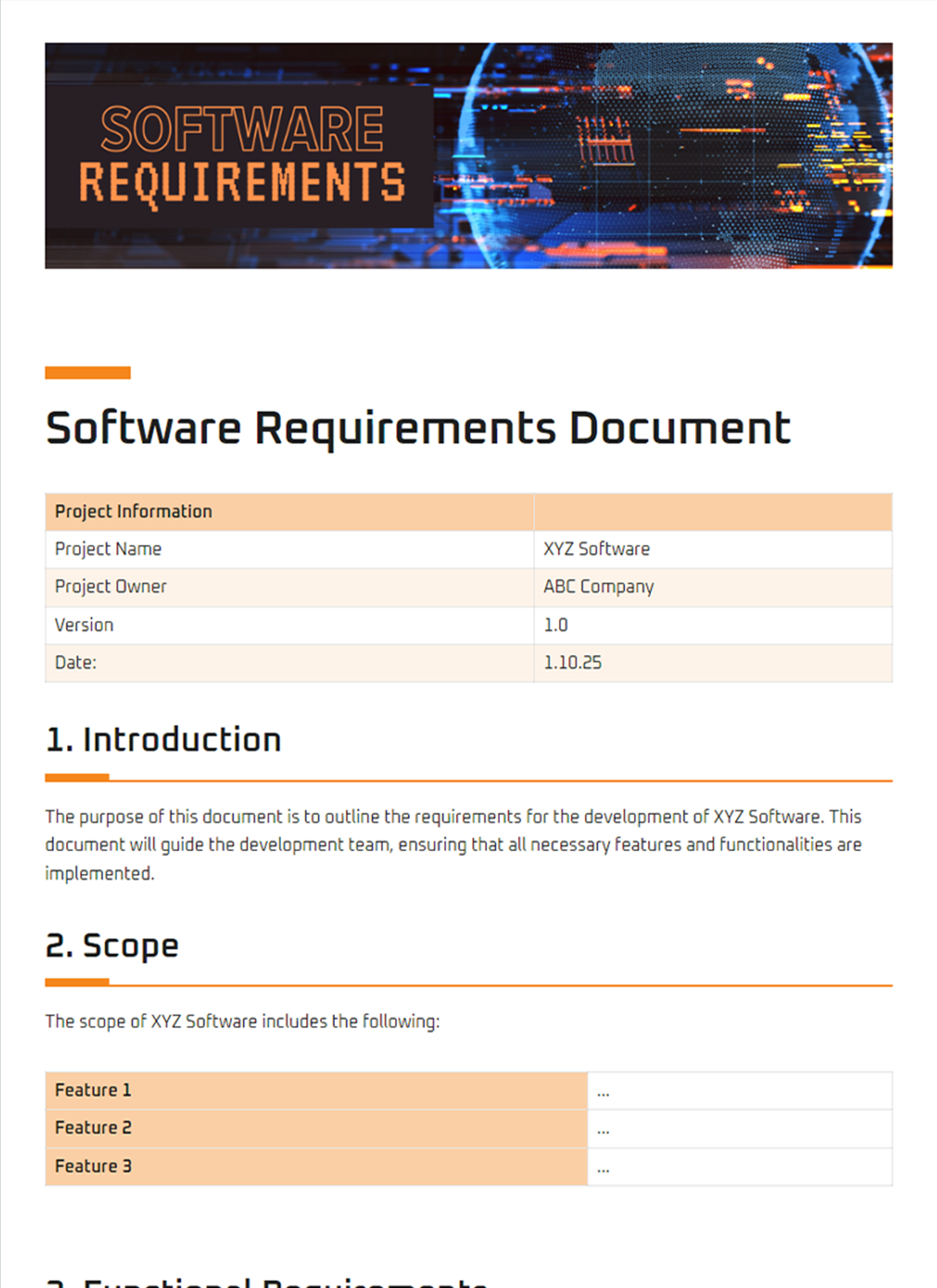An IT System Requirements Document (SRD) template is a crucial tool for capturing and defining the functional and non-functional requirements of an IT system. It serves as a blueprint for system development, ensuring that the final product meets the specific needs and expectations of the stakeholders. By providing a structured framework for documenting requirements, the SRD template facilitates effective communication and understanding between different parties involved in the system development process.
A comprehensive SRD template typically includes sections for identifying the system purpose, scope, and boundaries; defining user needs and expectations; detailing functional and non-functional requirements; specifying performance criteria; outlining system constraints and limitations; and establishing acceptance criteria. By organizing requirements in a systematic manner, the SRD template helps stakeholders validate and prioritize requirements, identify potential conflicts or dependencies, and manage changes throughout the system development lifecycle.

Importance of Using an IT System Requirements Document Template
Utilizing an IT system requirements document template offers numerous benefits throughout the system development process. It standardizes the requirements gathering and documentation process, ensuring consistency and completeness in capturing user needs. The structured format enhances communication and understanding among stakeholders, reducing the risk of misinterpretations and errors.
An SRD template facilitates traceability and accountability throughout the system lifecycle. By linking requirements to specific design and implementation elements, it allows for easy identification of the origin of changes and their impact on the system. This traceability enables effective change management and helps maintain alignment between requirements and the final product.
Furthermore, an SRD template streamlines the validation and verification process. By providing a structured framework for defining acceptance criteria, it enables stakeholders to participate in a formal review and approval process, ensuring that the system meets their expectations. This reduces the risk of defects and costly rework later in the development process.
Components of a Comprehensive IT System Requirements Document Template
A comprehensive IT system requirements document template typically consists of the following key components:
- System Purpose and Scope: Defines the overall purpose, goals, and boundaries of the IT system.
- User Needs and Expectations: Captures the functional and non-functional needs of the end users, including their workflow, preferences, and any specific requirements.
- Functional Requirements: Details the specific tasks and functions that the system must perform to meet the user needs.
- Non-Functional Requirements: Specifies the quality attributes of the system, such as performance, security, reliability, maintainability, and usability.
- Performance Criteria: Defines the measurable performance metrics that the system must achieve.
- System Constraints and Limitations: Outlines any technical, operational, or environmental limitations that may impact the system’s design or implementation.
- Acceptance Criteria: Establishes the criteria that must be met before the system is considered acceptable for deployment.
Conclusion
Utilizing an IT system requirements document template is indispensable for ensuring the successful development and implementation of IT systems. By providing a structured framework for capturing, organizing, and managing requirements, it promotes effective communication, reduces the risk of errors, and facilitates traceability and accountability throughout the system lifecycle. Investing in a comprehensive SRD template empowers stakeholders to collaborate effectively and deliver IT systems that fully meet the needs of the organization.
Remember, a well-crafted SRD template serves as a roadmap for system development, ensuring that the final product aligns precisely with the intended purpose and goals. It is a valuable tool that facilitates a successful and efficient system development journey.
